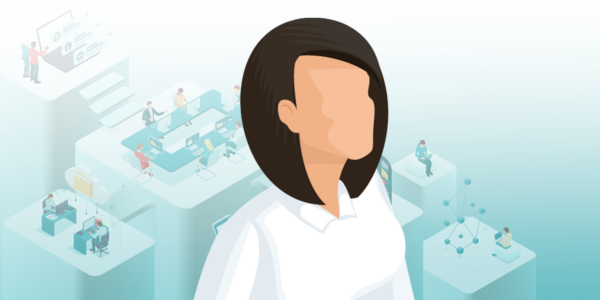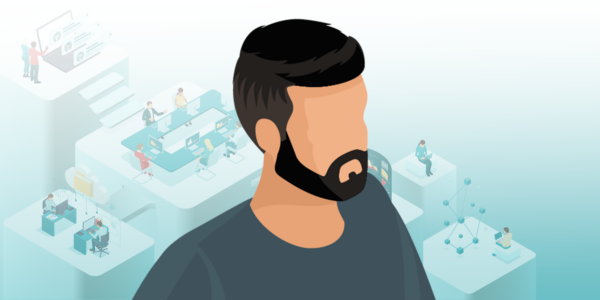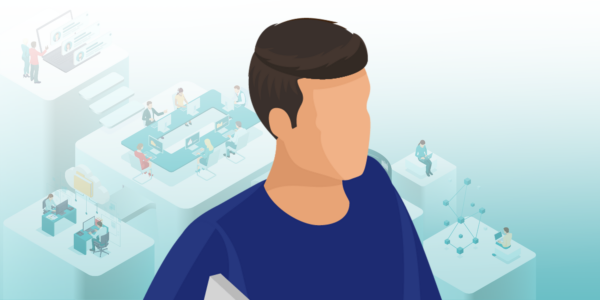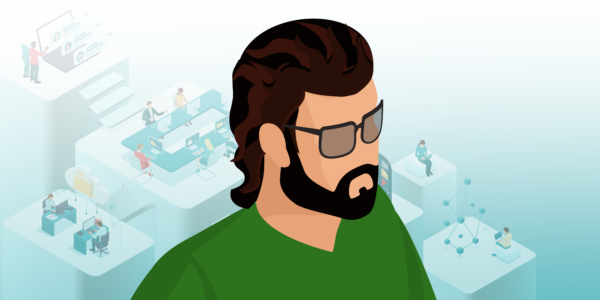7 must-have technology trends
Reading time : 4 minutesTechnological innovations follow one another at a frantic pace. Which ones are currently the most relevant? More importantly, how can they be leveraged in your business?
The McKinsey Tech Trends Index (1) identifies the trends that matter most. Mind you, it’s not because they’re cool or because they’re so close to science fiction. These areas of technology are evolving rapidly because of their potential impact on society. As a result, these are the trends that investors see as the most promising and the ones that generate the most new patent filings.

1. Next-level process automation and virtualization
Over the past few years, many innovations have proven themselves and are now being implemented in companies. These include robotics, the Internet of Things (IoT), 3D or 4D printing and digital twins. When these technologies are combined, they increase their performance tenfold, allowing you to streamline your operations even more.
Benefits for your business:
- With the ability to learn, robots are more versatile, as they are not limited to repetitive tasks.
- Shorter product development cycles, thanks to simulations and 3D/4D printing
- Improved overall operational efficiency
A real-world example: A manufacturer has implemented robots mounted on automatically steered vehicles to perform loading of goods. Human intervention is no longer required in this process, which increases operational efficiency while ensuring the safety of personnel.
2. Amplified connectivity
The combination of 5G and the Internet of Things provides ultra-fast, high-performance connectivity over longer distances. This virtually eliminates the time required to collect and download information.
Benefits for your business:
- Better control of your tools, machines or robots, wirelessly and remotely
- An increase in the performance of your processes
- The possibility of creating new intelligent services or products, equipped with sensors
A real-world example: A Chinese train station uses 5G to manage incidents and anomalies, which are automatically detected thanks to the Internet of Things.
3. Distributed infrastructure
In this trend, cloud computing goes hand in hand with a desire to minimize the movement of data (edge computing), in order to optimize the performance of your systems. This results in a reduction of the physical infrastructure of each company, but also a need for experts in programming these systems.
Benefits for your business:
- Accelerated data processing, with minimal or no delays
- Increased performance of decision support tools, which can provide complex analysis on demand
- Reduced system complexity and costs
- Enhanced cybersecurity
A real-world example: A manufacturer equips its machinery with sensors on the edge, then centralizes its data on the cloud. The data is processed and analyzed in real time, which allows faster interventions in case of irregularities. Maintenance costs are minimized, while asset performance is increased.
4. Next-generation computing
Here, two types of computing come together to increase system performance. Quantum computing leverages quantum mechanics to solve problems more efficiently. Neuromorphic computing, on the other hand, uses artificial neurons that mimic the structure of our nervous system. These specialized chips overcome some of the limitations of traditional chips.
Benefits for your business:
- More accessible artificial intelligence (AI) services
- Accelerated product development cycles, especially in the testing phase
- Reduced cost of physical technology infrastructure
- Faster machine learning
- More efficient searches in unstructured data sets
A real-world example: Quantum computing is helping the city of Beijing optimize traffic flow and reduce traffic jams between its downtown and the airport.
5. Applied AI
Artificial intelligence (AI) algorithms are used to teach machines to recognize patterns and act on those patterns. As a result, AI helps machines make sense of data of all kinds: visual, textual or audio.
Benefits for your business:
- Increased number of activities that can be automated
- Improved human/machine interactions, which can be done in a variety of forms (speech, images, video, text, etc.)
- Increased employee productivity
- Reduced operating costs
A real-world example: A farmer processes real-time images of his fields using an AI algorithm. It detects viruses attacking plants long before they become visible to humans, allowing faster interventions with smaller doses of pesticides.
6. Future of programming (by machines)
Thanks to machine learning, machines will now be able to replace some programmers in software development: this is Software 2.0. For organizations, this trend translates into highly simplified, iterative, intuitive ways to modify existing code and automate common programming tasks.
Benefits for your business:
- Your team needs fewer “generalist” programmers
- Software creation is less complex, more accessible
- The time required to deploy a new solution is reduced
A real-world example: In the automotive industry, one company combined Software 2.0 and AI in the creation of driverless vehicles. Now on the road, these vehicles provide data that optimizes their AI systems on an ongoing basis.
7. Zero-trust architecture
“Zero trust” is an ambiguous term, but it is a positive innovation for organizations. It is a new model of IT security, better adapted to the current reality of companies. In particular, it takes into consideration hybrid workspaces and telecommuting, protecting people, devices, applications and data at the same time.
Benefits for your business:
- Your employees can be productive from anywhere, without compromising security
- Data is accessible and secure
- Risks related to security breaches are minimized
A real-world example: A distributor optimized its supply chain management by securely recording all information related to processes and actions taken. As a result, it became easier to trace the origin of products, the number of human interventions in the processes decreased and the follow-up of items declared lost improved.
You want to use technology to support your business strategies?
Contact our experts, they’ll be happy to discuss it with you!
Source :





